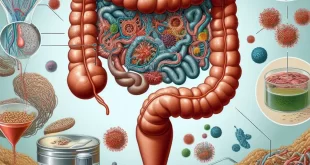Since the turn of the century, antibiotic resistance has posed a major challenge to public health. To address this concerning issue, researchers have delved into the bacterial dark matter in search of a molecule capable of neutralizing pathogenic bacteria. The recent discovery of Clovibactin opens the door to powerful new antibiotics, offering hope in the battle against the escalating problem of antibiotic resistance.
Once hailed as miracle cures, antibiotics have seen their effectiveness diminish in the face of increasingly resistant bacteria. Antibiotic resistance has become a serious threat to public health, prompting scientists worldwide to seek innovative solutions. However, the discovery of novel antibiotic compounds presents a formidable challenge.
Amidst this backdrop, Clovibactin, a new antibiotic, emerges as a promising beacon. Scientists from a consortium of European and American universities, in collaboration with NovoBiotic Pharmaceuticals based in Cambridge (USA), have identified this promising molecule. Markus Weingarth, a researcher at the Department of Chemistry at Utrecht University, and his team, have published their findings in the prestigious scientific journal Cell.
The uniqueness of Clovibactin lies in its ability to effectively target multidrug-resistant “superbugs” over the long term. In contrast to new antibiotics that often resemble existing drugs, Clovibactin appears to possess a distinct mechanism that renders it formidable against pathogenic bacteria.
Researchers have revealed that 99% of bacteria are part of what they term the “bacterial dark matter,” a genetic diversity of microbes that was previously challenging to cultivate in a laboratory. Clovibactin stands out as it originates from bacteria that had never been cultured before, preventing pathogenic bacteria from developing prior resistance. Recent technological advancements, like the iCHip device developed by NovoBiotic Pharmaceuticals in 2015, have allowed for the cultivation of a portion of this bacterial dark matter, paving the way for the discovery of Clovibactin in bacteria isolated from soil in North Carolina.
Clovibactin employs an extraordinary mechanism of destruction. Unlike conventional antibiotics that target a single molecule, it blocks the synthesis of the bacterial membrane by targeting three different molecules crucial to its construction. This uniqueness makes it more effective and less prone to rapid resistance development. Additionally, it forms fibrils on the surface of bacterial membranes, ensuring prolonged sequestration of target molecules and thus guaranteeing bacteria elimination.
The successful use of Clovibactin in treating mice infected with the Staphylococcus aureus bacterium, even one resistant to conventional antibiotics, offers a glimmer of hope in the battle against antibiotic resistance. While the journey to commercialization is long and demands substantial investments, this discovery marks a pivotal step in the quest for solutions against antibiotic resistance.
In conclusion, Clovibactin emerges as a promising new tool in the fight against antibiotic resistance. Its ability to effectively target multidrug-resistant bacteria, coupled with its unique mechanism of destruction, opens up new avenues of hope in the realm of antibiotics. Nonetheless, despite these advancements, the path to full utilization remains riddled with challenges and requires ongoing commitment to preserve the efficacy of antibiotic treatments.
 medjouel.com Study Non Stop
medjouel.com Study Non Stop



